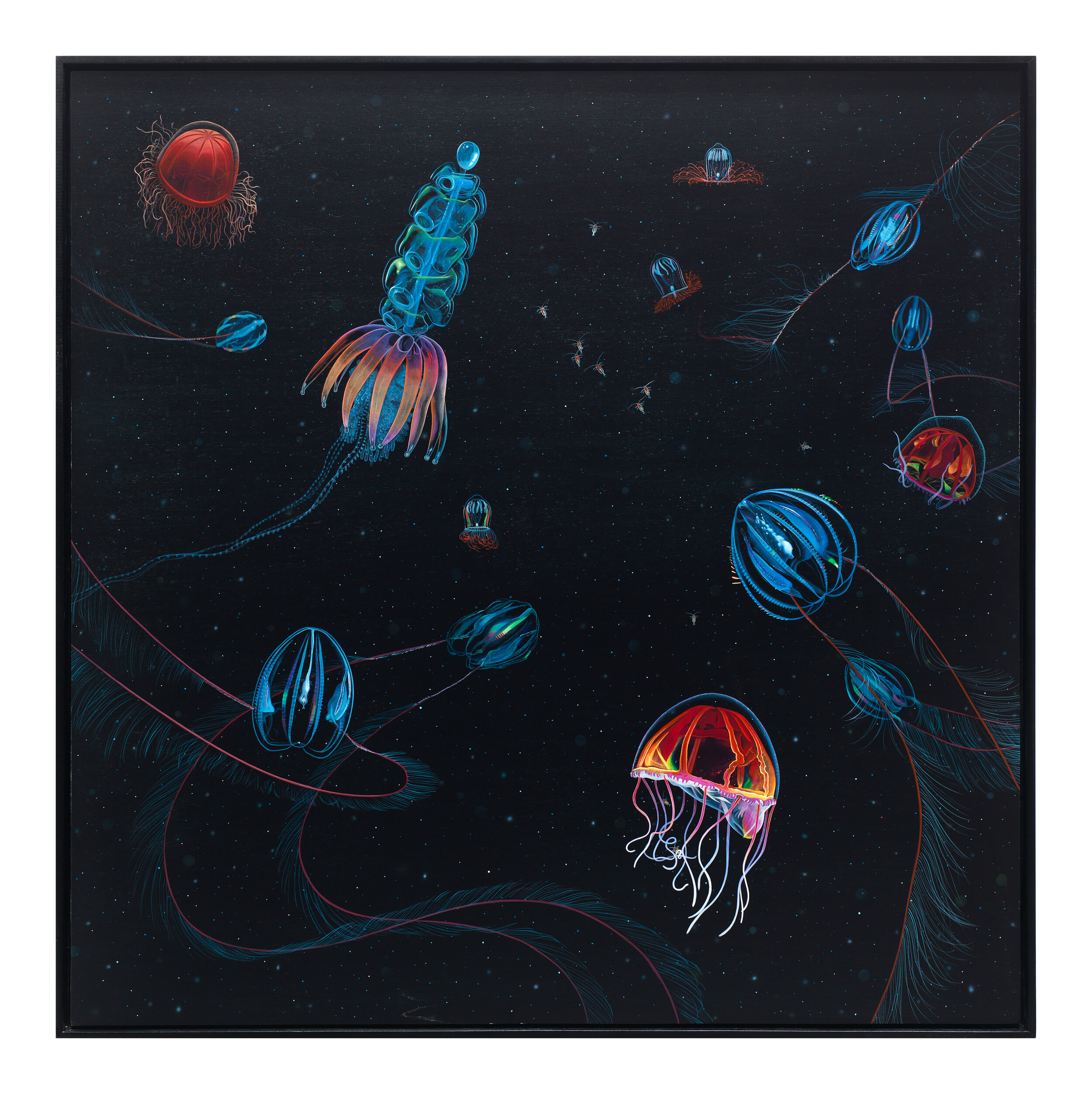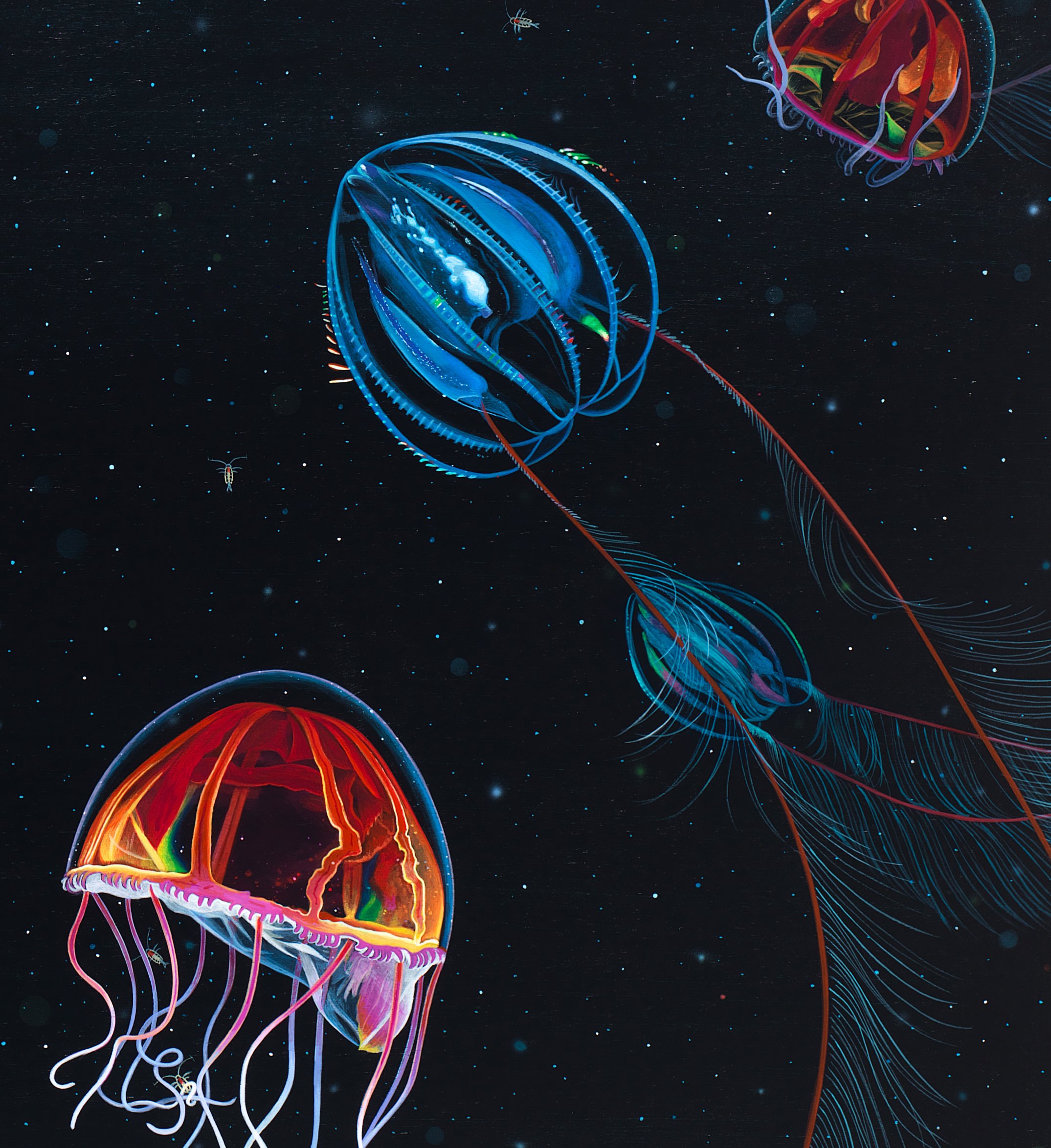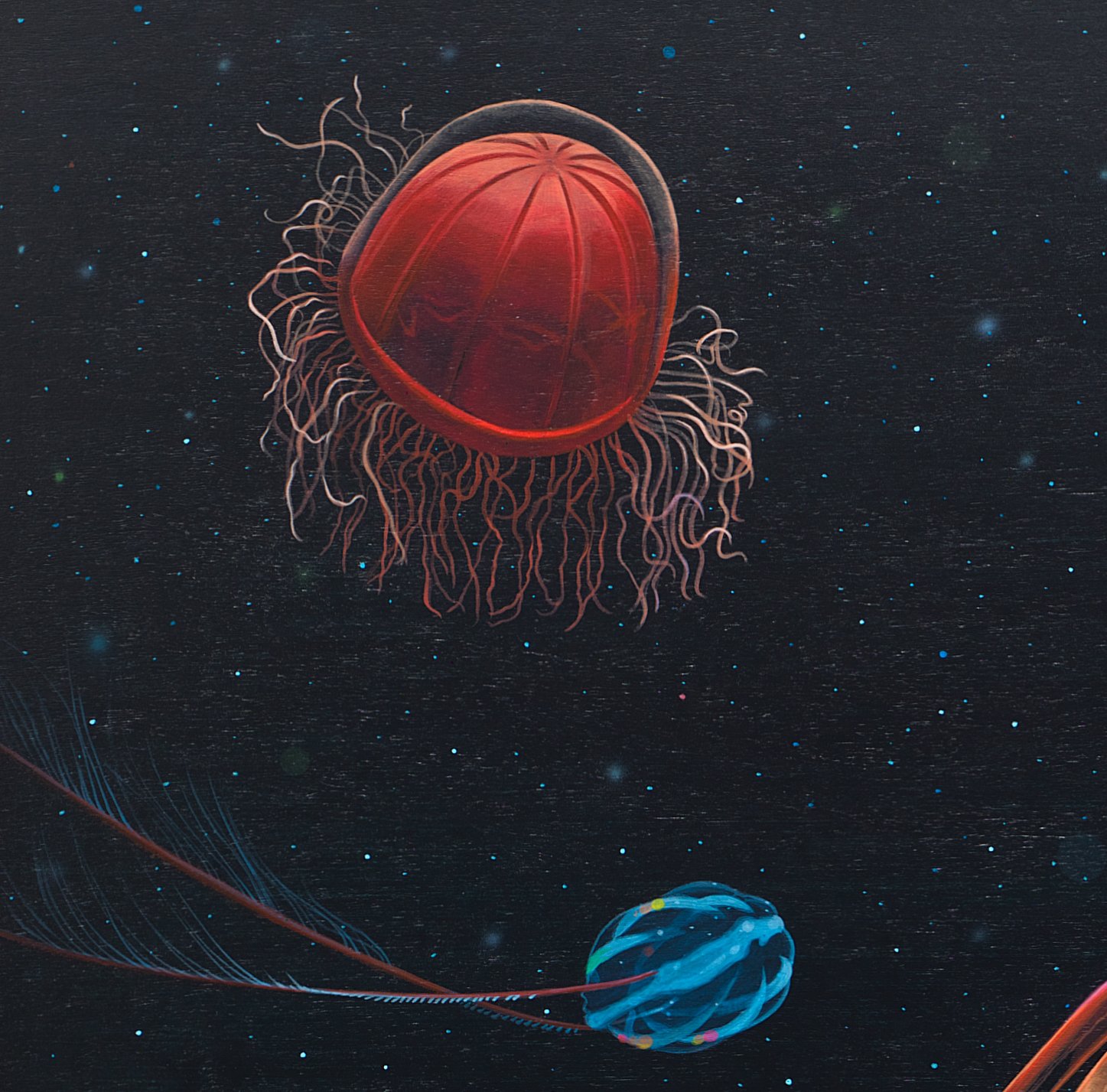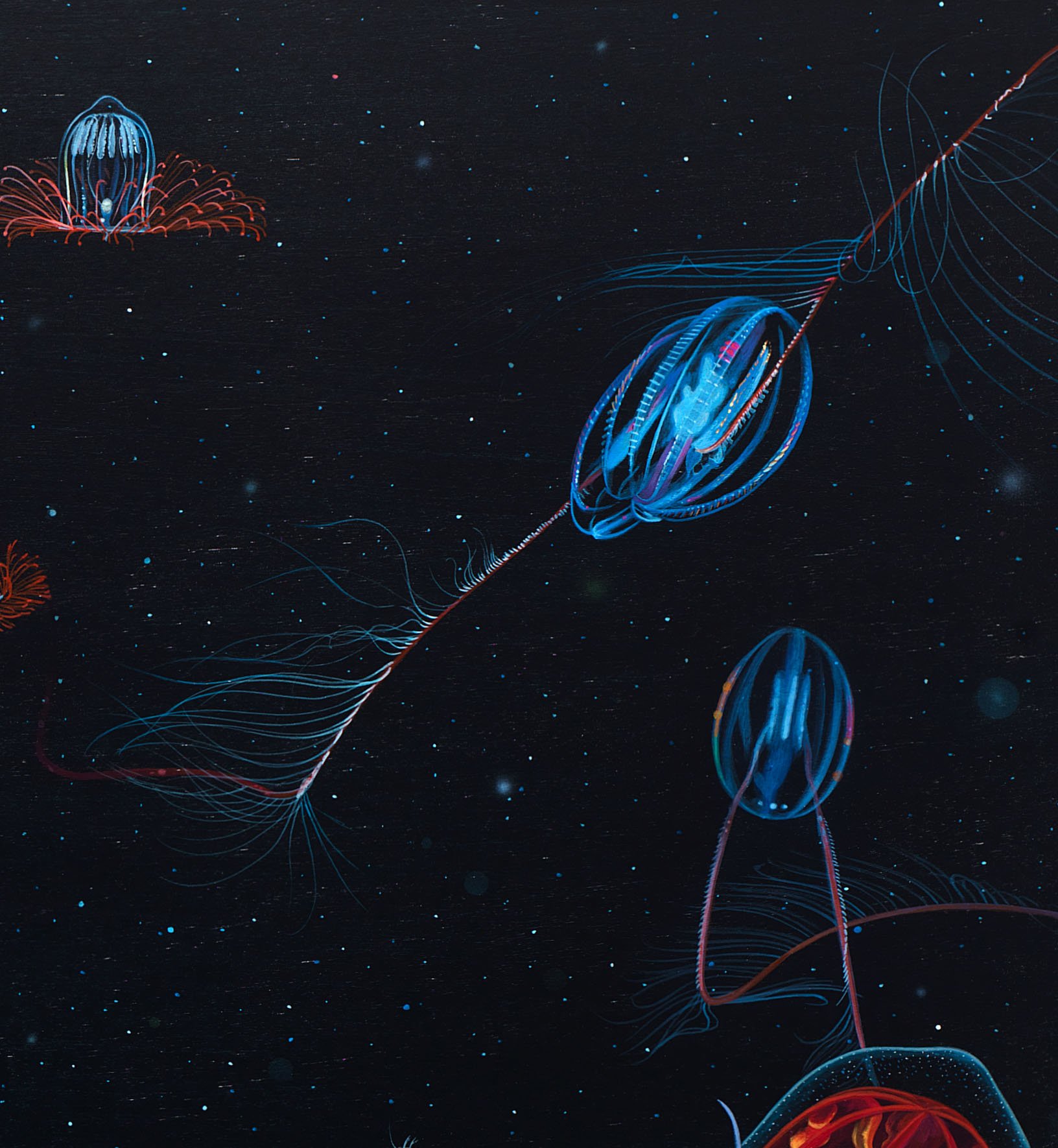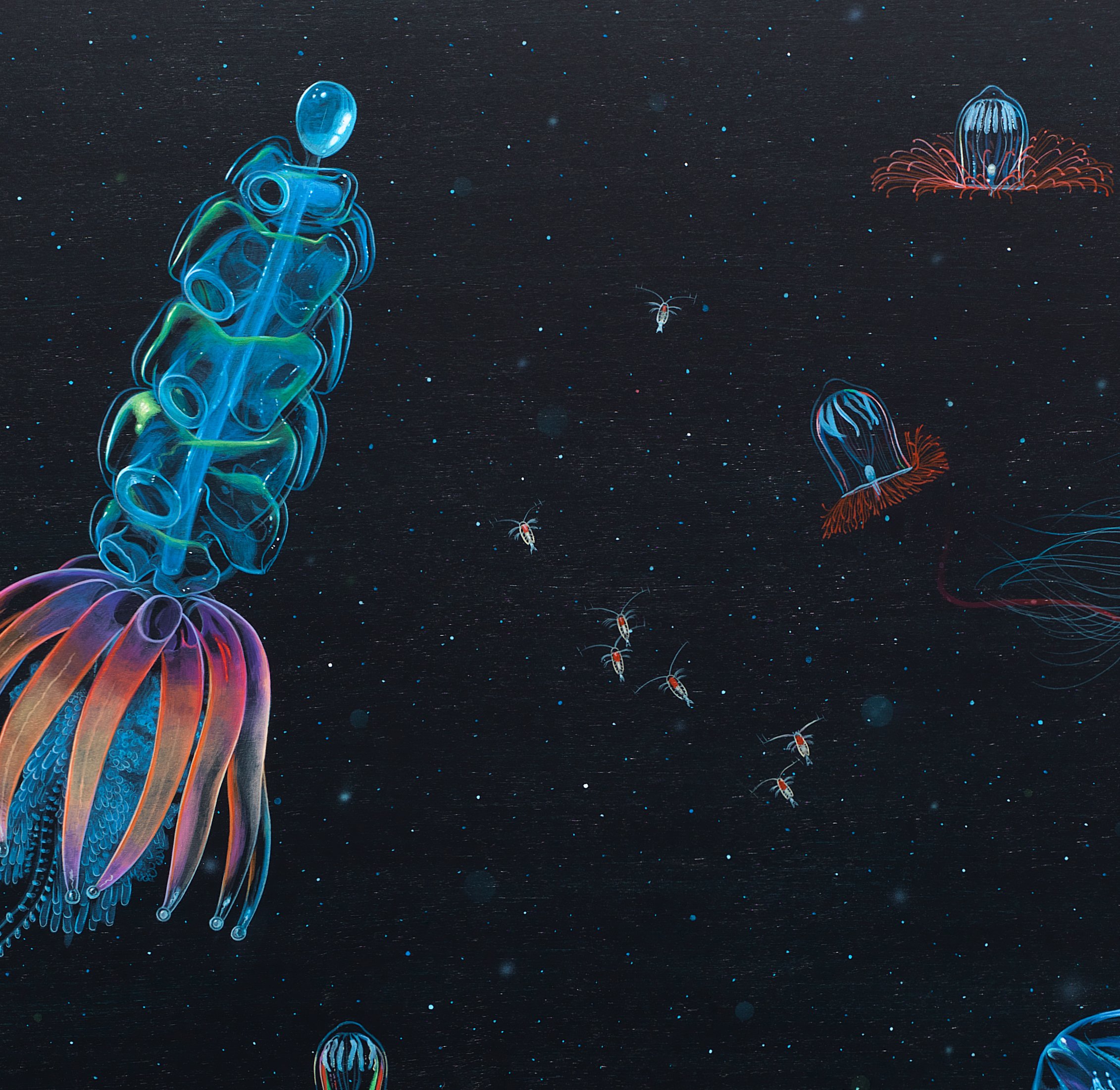Arctic Wonders Series
Pulse
31.5” x 31.5” acrylic on maple panel, 2019
Arctic Wonders Series (2/3)
Pulse surveys gelatinous zooplankton of the Arctic Ocean—highlighting how ctenophores, hydrozoans, and siphonophores adapt to a rapidly shifting marine environment.
Part of the Arctic Wonders series for the permanent Change exhibition with National Geographic and Lindblad Expeditions, this work features a diversity of gelatinous zooplankton native to the Arctic.
Species depicted include Aglantha digitale, a bell-shaped hydrozoan commonly found in Arctic waters; Mertensia ovum, a rainbow-refracting ctenophore; and Physophora hydrostatica, a colonial siphonophore known for its long, stinging tentacles. The painting also includes deep-sea jellyfish such as Crossota norvegica and the more common Crossota millsae.
These organisms—often overlooked and rarely seen—reveal the complexity of Arctic ecosystems and their dynamic responses to environmental change.
Special thanks to National Geographic, Lindblad, and all the biologists who made this painting possible. Most of all, Steven Haddock and Wyatt Patry from the Monterey Bay Aquarium. Bart Shepard from the CA Academy of Sciences, and Alexander Semenov at Moscow State University’s White Sea Biological Station, and Charlotte Havermans from the Alfred Wegener Institute Helmholtz Centre for Polar and Marine Research.

